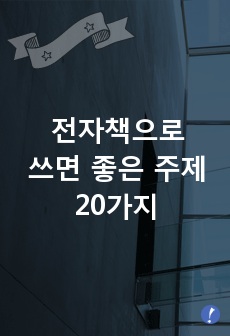BSA‑carbon dots a promising “off–on” fluorescence probe for detecting glyphosate residues in agricultural products
* 본 문서는 배포용으로 복사 및 편집이 불가합니다.
서지정보
ㆍ발행기관 : 한국탄소학회
ㆍ수록지정보 : Carbon letters / 33권 / 7호
ㆍ저자명 : Qian Wang, Miao Wang, Lufei Zheng, Yongxin She, Jing Wang, Minghong Jia, A. M. Abd El‑Aty
ㆍ저자명 : Qian Wang, Miao Wang, Lufei Zheng, Yongxin She, Jing Wang, Minghong Jia, A. M. Abd El‑Aty
목차
BSA-carbon dots a promising “off–on” fluorescence probe for detecting glyphosate residues in agricultural productsAbstract
1 Introduction
2 Experimental section
2.1 Reagents and instruments
2.2 Synthesis of BSA-CDs
2.3 Fluorescence sensing of glyphosate
2.4 Analysis of practical samples
3 Results and discussion
3.1 Construction and characterization of BSA-CDs
3.2 Optimization of sensing for GPs
3.3 Selectivity and anti-interference of BSA-CDs
3.4 Analysis of real samples
4 Conclusion
Acknowledgements
References
영어 초록
The widespread and extensive use of glyphosate in agriculture has raised concerns about its potential impact on the quality and safety of agricultural products. Conventional detection methods require long analysis times, making them impractical for the rapid detection of large quantities of samples. Therefore, developing a fast and simple detection system for glyphosate pesticide residues is urgent. In this study, the development of a facile fluorescence probe synthesized using a simple one-pot hydrothermal method for the determination of glyphosate is an important step toward addressing the need for a fast and simple detection system. The present sensor was created using bovine serum albumin (BSA) as a precursor, and the sensor operates by producing an “off–on” fluorescent signal. The bovine albumin-derived BSA-CDs emitted light yellow fluorescence, but this fluorescence was quenched (or suppressed) by the presence of Cu2+ ions. However, the fluorescence can be restored by the presence of glyphosate, which interacts with the Cu2+ ions to form a complex and release the BSACDs from suppression. The functional groups in glyphosate can capture Cu2+ and break the BSA-CDs/Cu2+ combinatorial system. The BSA-CDs/Cu2+ fluorescence quenching system had good selectivity for glyphosate. The detection limit of the BSA-CD/Cu2+ fluorescence sensor was 0.05 μg/mL. This developed method was utilized to successfully detect glyphosate in Chinese wheat. The average recoveries ranged from 98.9 to 100.7%, with a relative standard deviation < 3.0%, showing good prospects for practical applicability.참고 자료
없음"Carbon letters"의 다른 논문
 Interdependent factors influencing the carbon yield, st..13페이지
Interdependent factors influencing the carbon yield, st..13페이지 Experiment and molecular simulation for liquid phase ad..15페이지
Experiment and molecular simulation for liquid phase ad..15페이지 Black phosphorus nanosheets‑based effective electrochem..9페이지
Black phosphorus nanosheets‑based effective electrochem..9페이지 Preparation and effect evaluation of rigid polyurethane..9페이지
Preparation and effect evaluation of rigid polyurethane..9페이지 Fabrication of graphene‑assisted voltammetry platform f..10페이지
Fabrication of graphene‑assisted voltammetry platform f..10페이지 A sandwich‑like CMC‑based/graphene/CMC‑based conductive..15페이지
A sandwich‑like CMC‑based/graphene/CMC‑based conductive..15페이지 In‑situ growth of ZIF‑8/CP with ultra‑high adsorption c..11페이지
In‑situ growth of ZIF‑8/CP with ultra‑high adsorption c..11페이지 A comparative study on metal species implanted amine–br..11페이지
A comparative study on metal species implanted amine–br..11페이지 Investigation on thermal conductivity of dimethyl silic..7페이지
Investigation on thermal conductivity of dimethyl silic..7페이지 Predicting the wear performance of graphene and silicon..26페이지
Predicting the wear performance of graphene and silicon..26페이지




















